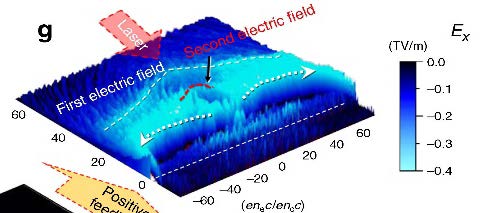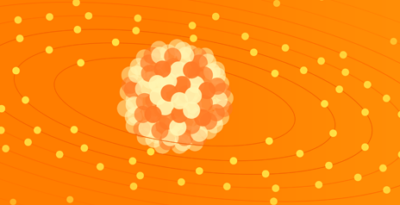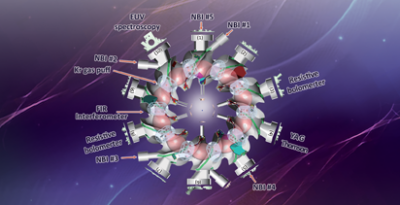Latest News
News List-
Research Summary
The Plasma Quantum Processes Unit is organized to study various quantum processes in plasmas, such as electromagnetic emission and absorption due to quantum interactions between electrons, ions, atoms, and molecules in plasmas, the interaction between atoms and electromagnetic fields, materials, intense lasers, and intense particle beams, etc. Spectra are useful to understand plasma properties, such as electron temperature and density, velocity fields, magnetic field strengths, etc., and microscopic quantum processes between plasma constituents and electromagnetic fields may contribute to developing macroscopic properties of plasmas.
The main missions of the unit are to understand 1) spectra and properties of highly charged high-Z ions to examine high-Z impurity behavior in fusion plasmas; 2) plasma properties of interactions with radiation fields and materials; 3) collective and transport phenomena due to atomic collisions; 4) nonlinear and nonequilibrium properties for laser-material interaction; and 5) atomic properties of exotic muon atoms.
To achieve the missions, we will perform theoretical and experimental studies on atomic structure and spectra of highly charged high-Z ions and exotic atoms with a muon, develop spectroscopic models for nonequilibrium plasmas with evaluation by experiments, examine collective phenomena of plasmas by theoretical studies, numerical simulations, and machine learning techniques, and perform experiments on interaction with lasers and particle beams, and theoretical and experimental studies on nonlinear and non-equilibrium high-density plasma produced by laser-material interactions. We also promote and accelerate joint research in Japan and overseas to perform these research plans and will create new research fields through interdisciplinary collaborations on atomic and molecular process research and database development, by forming a research center network with universities and institutions.

Figure 1. Tungsten spectra were measured in LHD and compact Electron Beam Ion Trap (CoBIT) for extreme ultraviolet wavelength range. CoBIT can measure spectrum with limited charge state distribution [1]. 
Figure 2. Numerical simulation for laser-plasma interaction. Electric field strength is shown in color [2]. - H. A. Sakaue et. al., in preparation
- S. Kojima et. al., “Electromagnetic field growth triggering super-ponderomotive electron acceleration during multi-picosecond laser-plasma interaction“, Communications Physics 2 (2019) 99.
Member
*:Unit Leader
-
Guest Prof. Endre AndrasTakacsAffiliate Clemson University (America)
-
Assist. Prof. FUNABA, HisamichiFields Plasma diagnostics
-
Prof. HOSHI, TakeoFields Data-driven science
-
Prof. KATO, Daiji (Chairperson)Fields Atomic physics (theory)
-
Project Researcher KANG, Byungjun
-
Project Researcher KONISHI, Yusuke
-
Research Support KATO, MasatoshiFields Atomic and Molecular Database
-
Assoc. Prof. KIMURA, NaokiFields Atomic & Molecular Physics (Experiment)
-
Assist. Prof. MORITAKA, ToseoFields Plasma simulation
-
Prof. MURAKAMI, Izumi (Unit Leader)Fields Plasma Atomic and Molecular Processes
-
Assist. Prof. MUTO, SadatsuguFields Plasma diagnostics
-
Assist. Prof. SAKAI, KentaroFields Laboratory astrophysics
-
Assist. Prof. SAKAUE, HiroyukiFields Atomic physics (experimental)
-
Assoc. Prof. SETO, Keita
-
Assoc. Prof. SUZUKI, ChihiroFields Plasma spectroscopy
-
Guest Prof. YAMAGUCHI, HiroyaAffiliate JAXA
-
Project Lecture TAKAHASHI, KarinAffiliate Tokyo Info. Design Professional Univ.
External Member
-
FUJIOKA, ShinsukeAffiliate Osaka University, Prof.
-
HARA, HirohisaAffiliate NAOJ, Prof.
-
ITAKURA, KazukiAffiliate NIAS, Prof.
-
KINO, YasushiAffiliate Tohoku University, Prof.
-
KURAMITSU, YasuhiroAffiliate Osaka University, Prof.
-
NAKAMURA, NobuyukiAffiliate The University of Electro-Communications (UEC), Prof.
-
NAMBA, ShinichiAffiliate Hiroshima University, Prof.
-
OHASHI, HayatoAffiliate Toyama University, Lecturer
-
SASAKI, AkiraAffiliate QST, Specialist
-
SENTOKU, YasuhikoAffiliate Osaka University, Prof.
-
SHIGEMORI, KeisukeAffiliate Osaka University, Prof.
-
TANAKA, MasaomiAffiliate Tohoku University, Prof.
-
TANUMA, HajimeAffiliate Tokyo Metropolitan Public University Corporation (TMU), Prof.
-
YAMAGUCHI, HiroyaAffiliate JAXA, Prof.
Publications
Contact
Email:pqp



